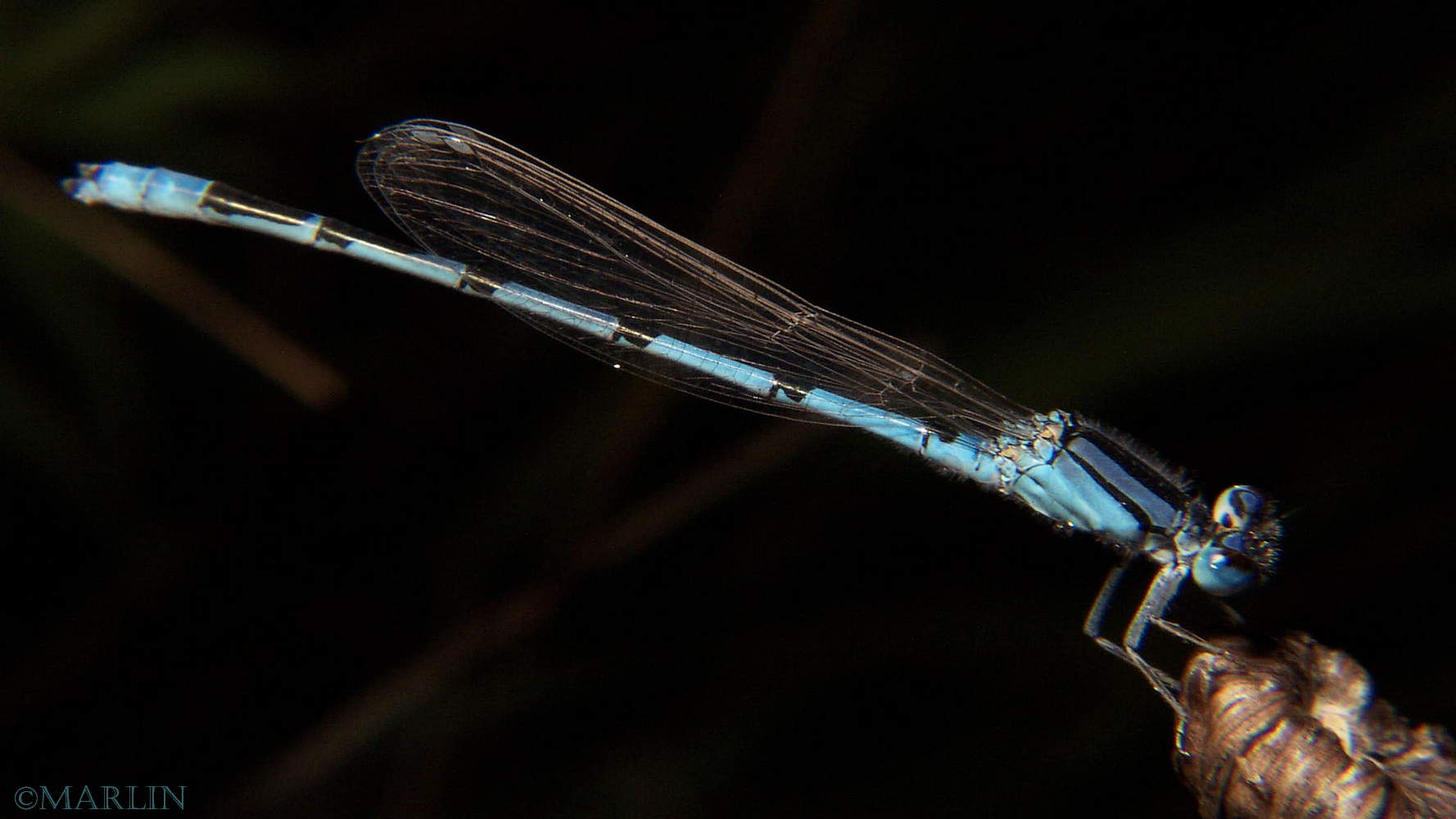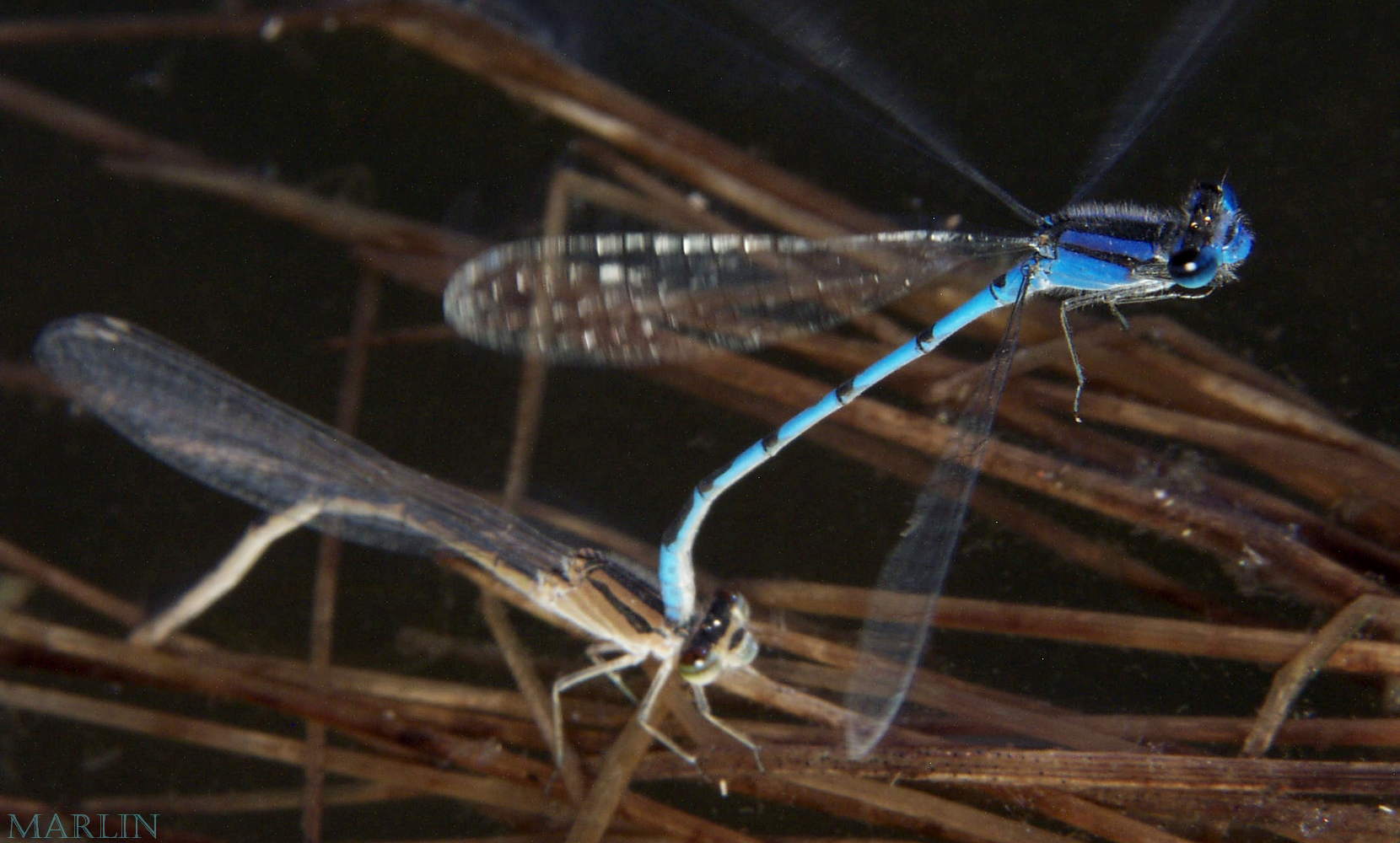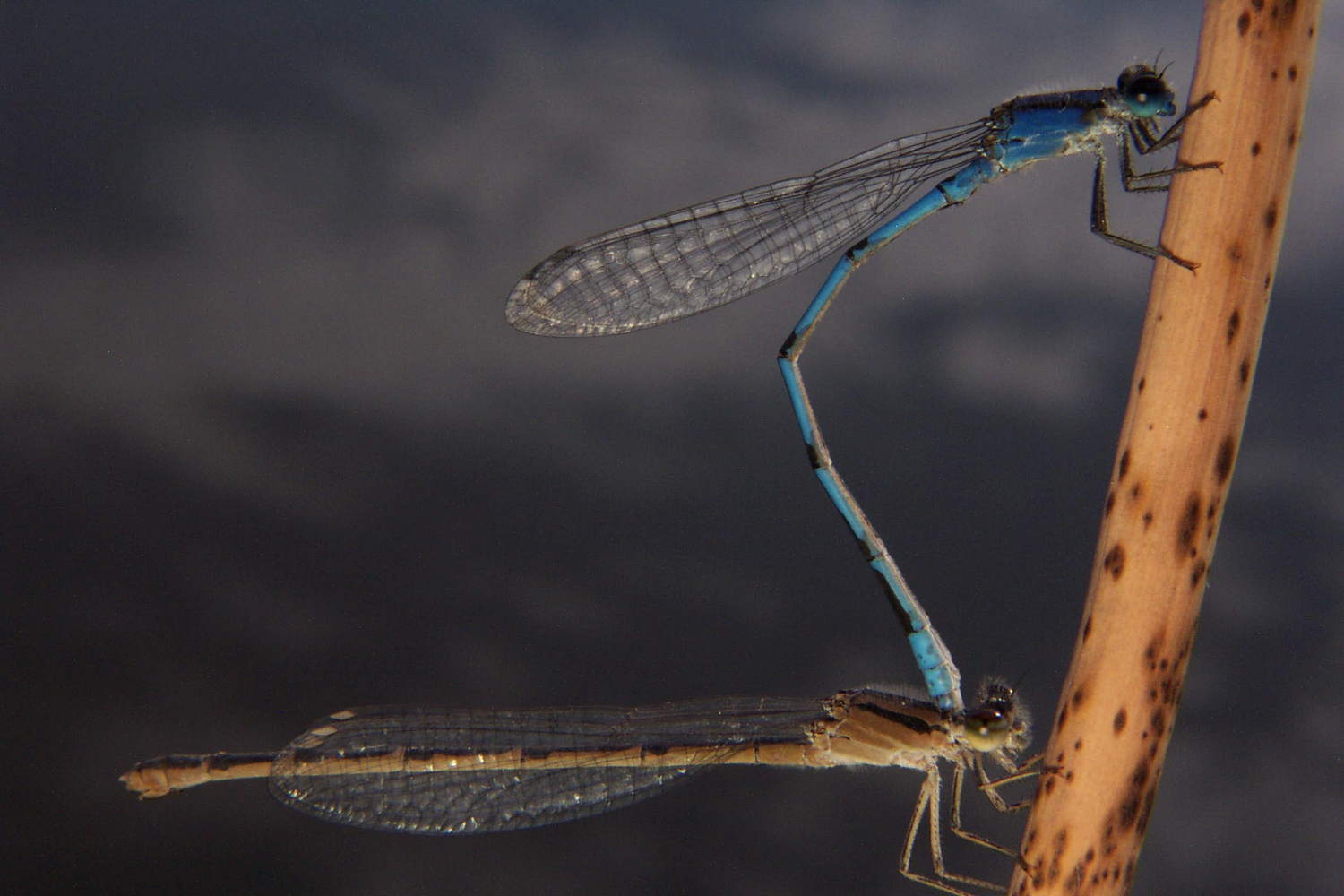Familiar Bluet Damselfly – Enallagma civile
I love nothing better than chasing these whimsical creatures around on a nice summer day. I took these pictures way back in 2005 (it’s now 2023) using a Kodak point-and-shoot camera. These insects are becoming so rare I feel immense gratitude I was able to find so many of them back then.
Damselflies complete a life cycle in one or two years. The adults mate over the shallow water, sometimes in flight but often while clinging to the exposed portions of weed beds or shoreline vegetation. Immediately after mating, the female will crawl down the vegetation, and ‘into’ the water to lay her eggs on the submerged portion of the vegetation. Once the eggs are laid she will crawl back up the vegetation and repeat the process. When the eggs hatch they do not go through the larva and pupa transformations. The newly hatched damsel is just a smaller version of the later immature stages. Thus they are simply called ‘nymphs’ until they actually hatch into adults.
The damselfly nymph is predacious. Usually it lies in wait for other aquatic bugs to get within range and then grabs them with its ‘labium’ which is modified lower jaw. The nymph will proceed through 10 to 12 instars, or molts, before becoming fully developed and ready to emerge as an adult. With each molt the nymph becomes somewhat darker in color. Finally the nymph will swim towards the shore and crawl into shoreline vegetation. While clinging to this vegetation the nymph’s skin breaks along the wing case and out crawls a shortened version of the adult. Before taking flight, the new adult must pump body fluids into its abdomen and wings. Depending on the species, the adult will live for several weeks to several months before mating and dying.
I’m always thankful to find a mated pair so I can compare the sexes size and color-wise. I have mistaken females of one species for males of another and vice versa. Back in the early days of the internet, resources for identifying insect photos was were in their infancy.
Insects | Odonata Index | Dragonflies | Damselflies | Bugs Index | Spiders



